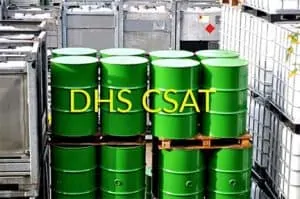

The Department of Homeland Security (DHS) Final Rule (6 CFR Part 27), Chemical Facility Anti-Terrorism Standards was written on April 9, 2007. The rule was finalized prior to 
This article describes what is required and how to prepare. Read and act before October 1, 2016. Published in RETA Breeze, Sep-Oct 2016, issue.
Lee Pyle is a Vice President of SCS Engineers and our National Specialist on Risk Management Plans and Process Safety Management. Ms. Pyle has served as lead engineer on many projects and has been involved in the preparation of over one hundred Risk Management and Safety Management Programs. She has been key in the development of the Risk and Safety program at SCS, including document preparation for specific Administrating Agencies throughout the state of California and ensuring that all our risk programs are acceptable to these agencies.
Ms. Pyle specializes in risk programs for chemical processes in particular, ammonia refrigeration facilities and water/wastewater treatment facilities. Ms. Pyle has developed EPA Risk Management Program submittal documentation (Risk Management Plans) for dozens of facilities, including developing Executive Summaries detailing each facilitys safety features, management structure, and potential risks associated with the process for EPA review and approval.
Ms. Pyle has worked with industry groups to develop standardized Process Safety Management Programs (PSM) for industry members to ensure compliance with OSHAs 1910.119 regulation (Cal-OSHA Title 8, §5189). She has also been involved in auditing facility PSM programs. Ms. Pyles experience includes all aspects of preparing documentation for PSM and Californias Accidental Release Prevention Program (CalARP) programs. This includes participating in Hazard and Operability Studies as the team leader, quality control, preparing qualitative risk assessments, and conducting off-site consequence analyses. Her vast experience in developing programs for numerous facilities has generated new approaches and innovative methods for managing and implementing individual PSM programs.
Additional experience includes preparing Operations Manuals for facilities transferring bulk oil; supporting SCS RECLAIM and Clean Air Act Amendment – Title V permitting programs by developing potential-to-emit and actual emission profiles as well as outlining detailed process flow diagrams for industrial facilities; developing emissions inventories for natural gas storage facilities and refineries; and conducting detailed air quality inspections of industrial facilities in support of developing federal operating permits.